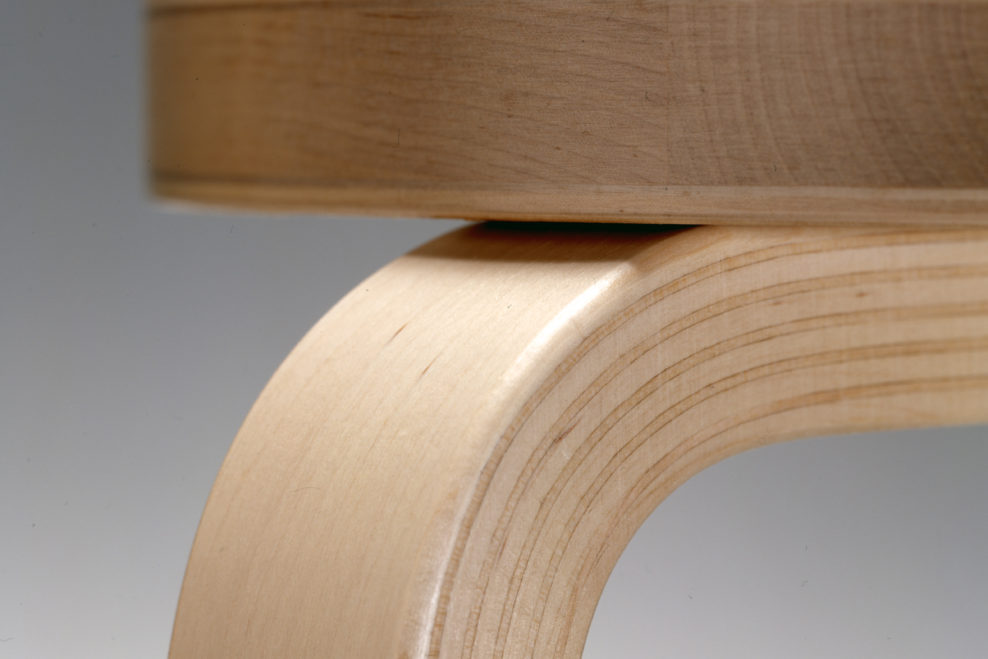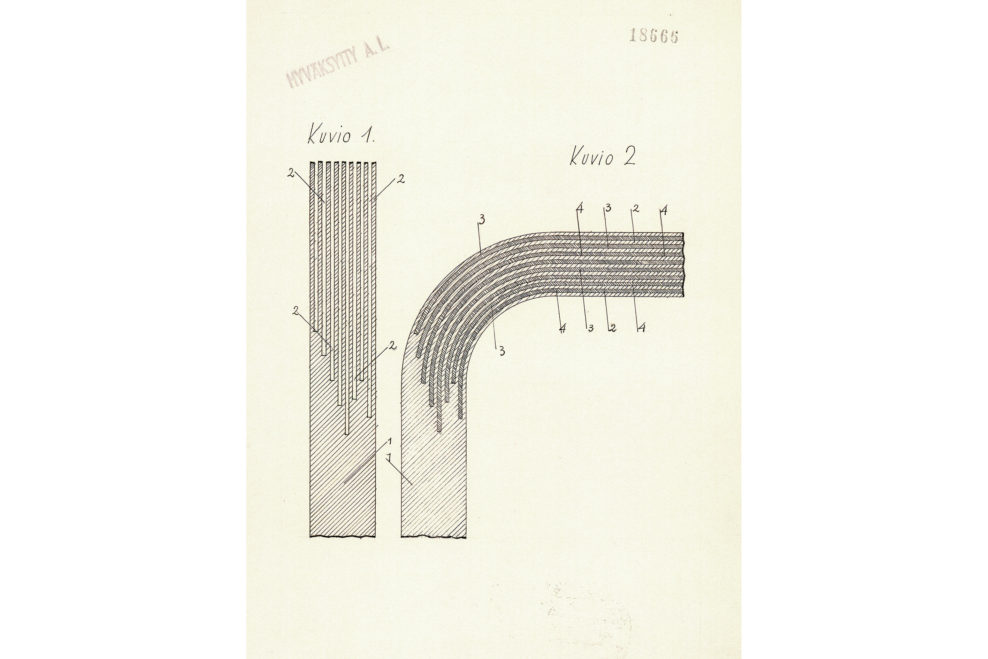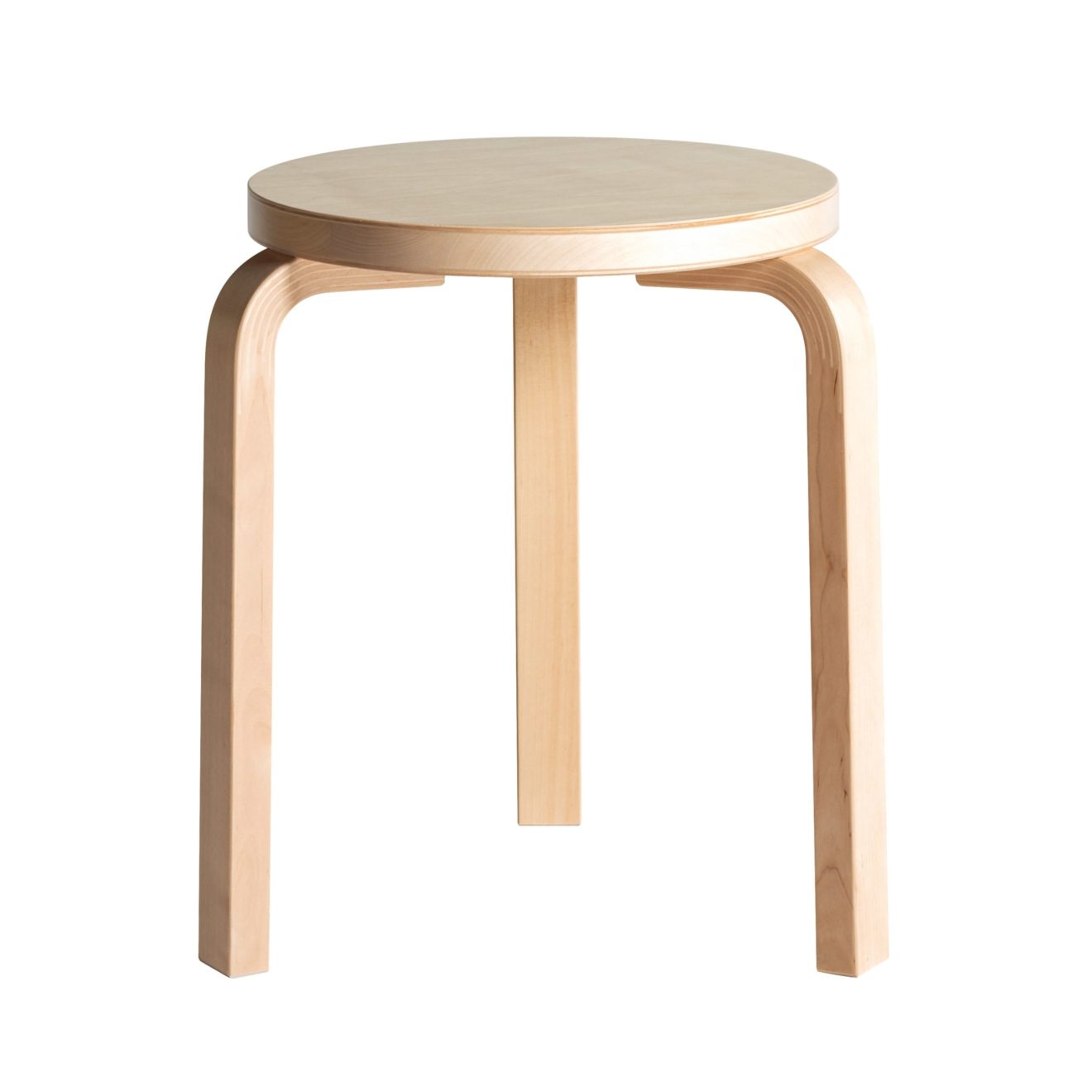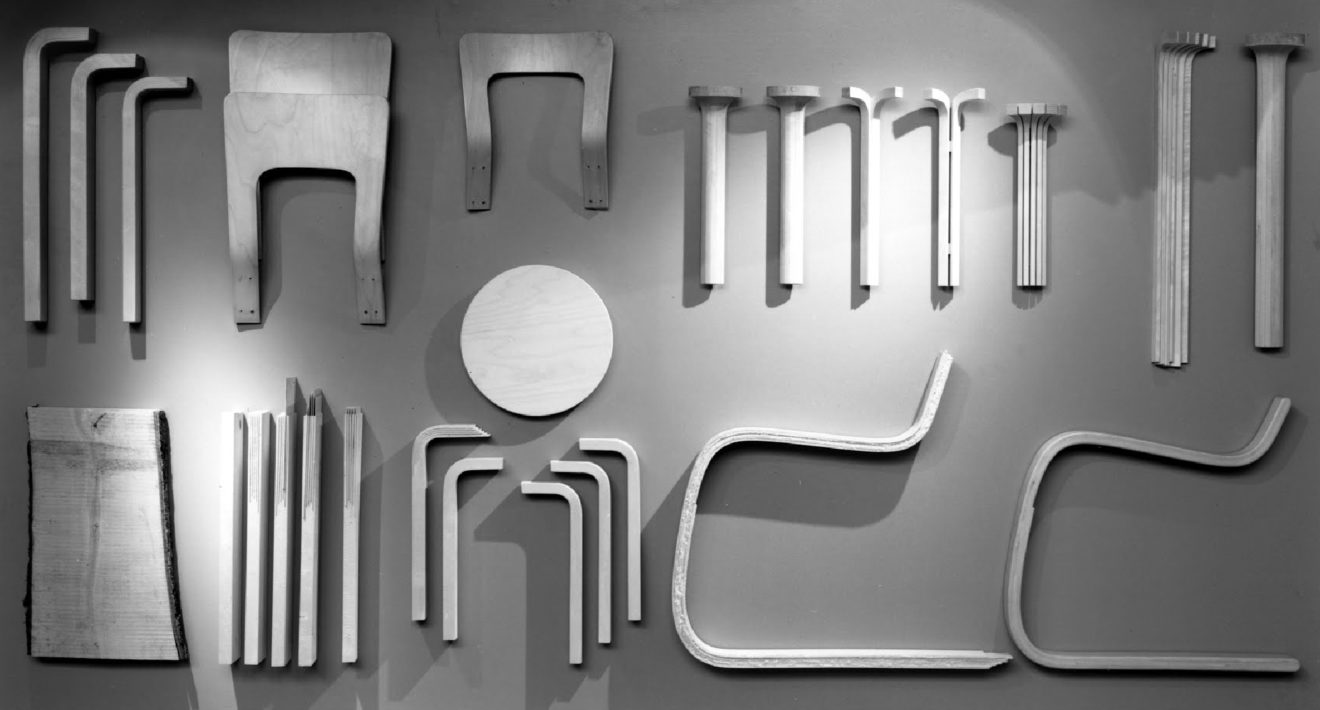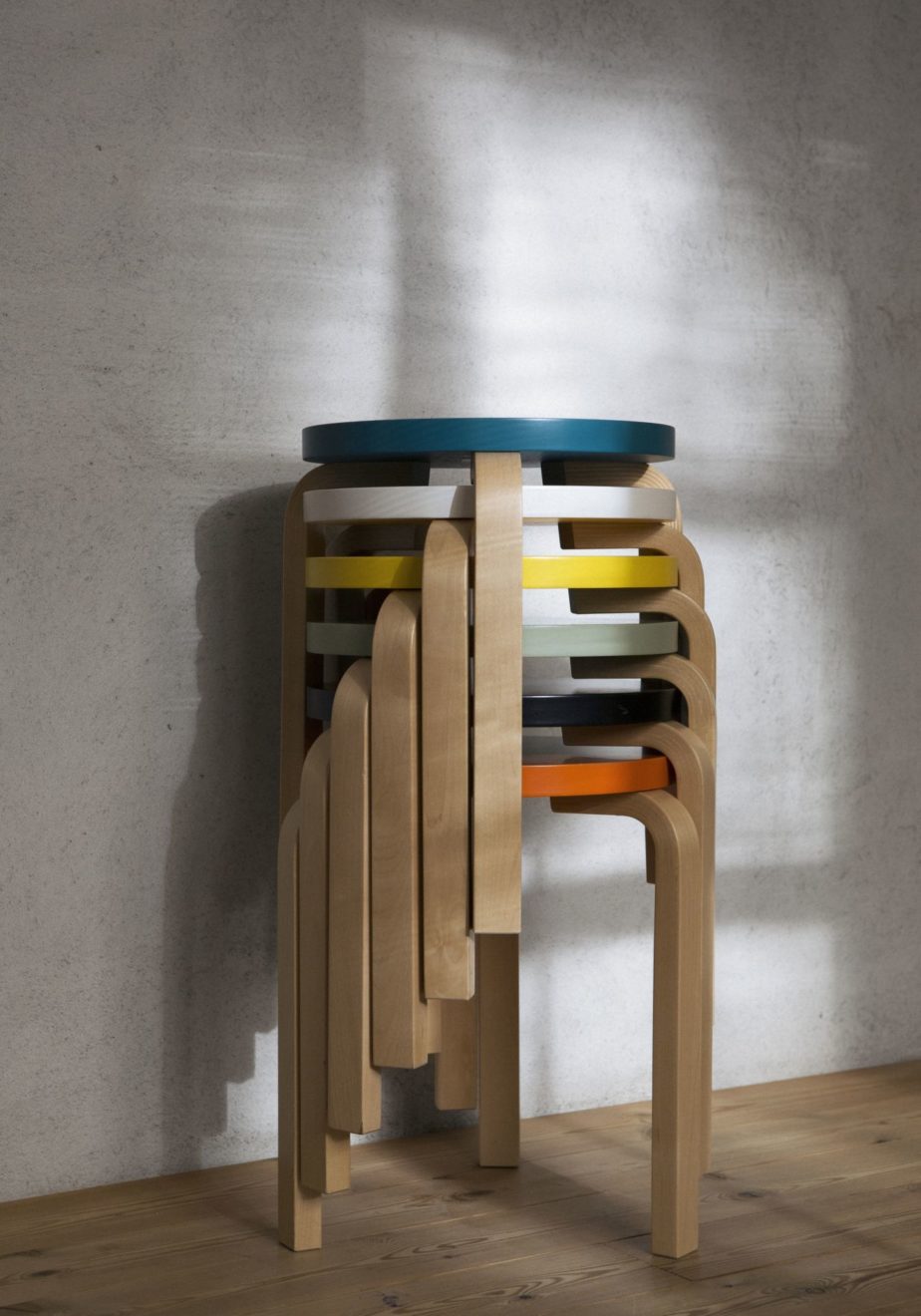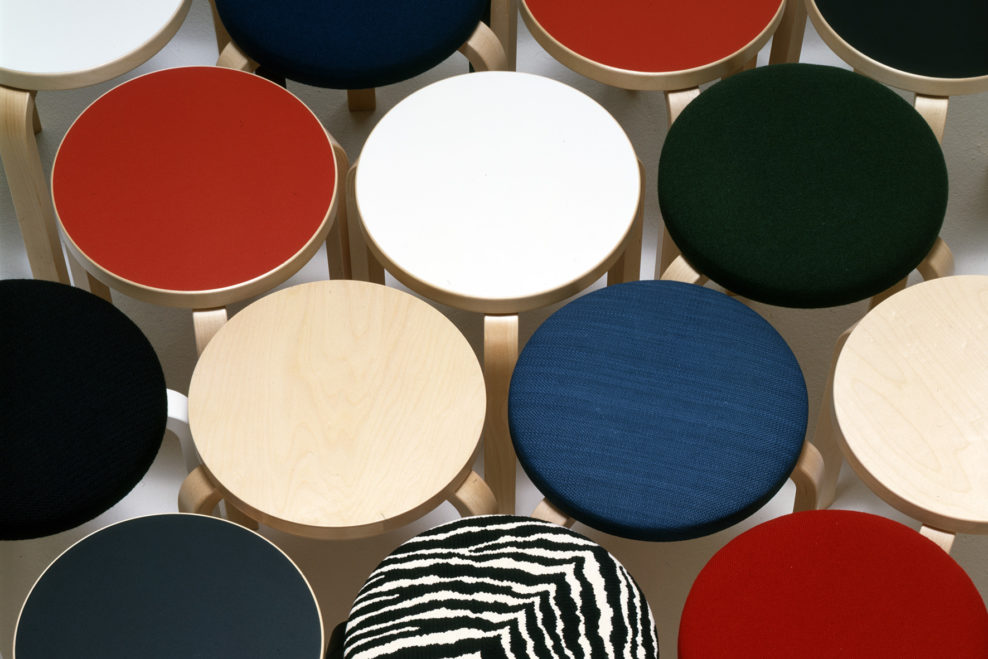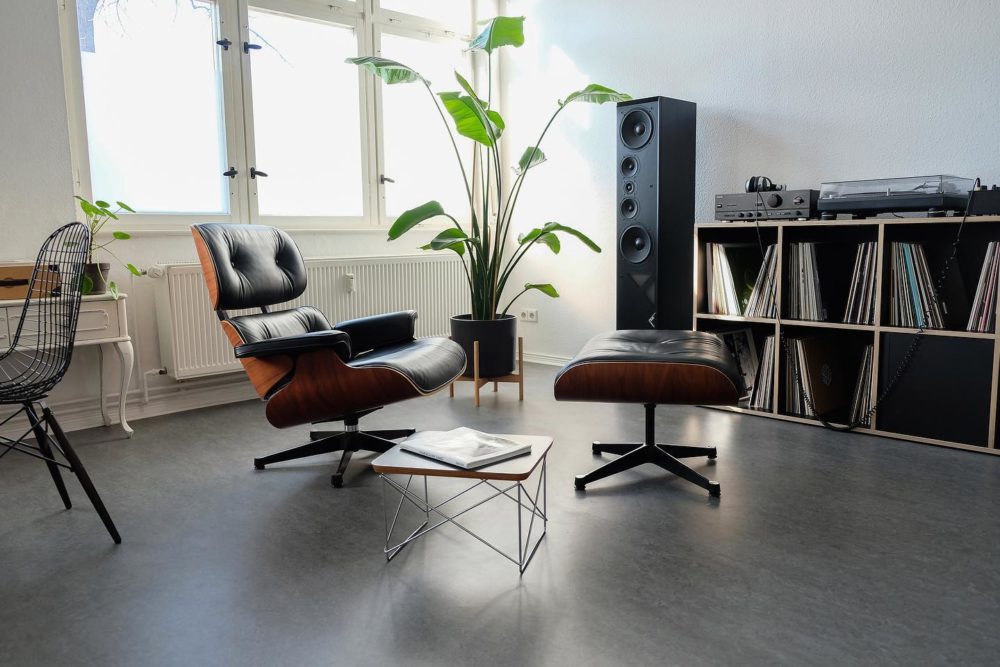Stool 60
Stool 60
Alvar Aalto
1933
The seemingly simple Stool 60 is, in fact, the breakthrough answer to a furniture-design problem that the Finnish architect and designer, Alvar Aalto, was determined to solve – how does one efficiently and effectively connect the vertical and horizontal parts?
With the help of furniture manufacturer Otto Korhone, Aalto developed a viable method of bending and laminating wood that could be replicated on a large scale. The resulting L-leg – what Aalto would consider the “determining stylistic factor” of the Stool 60 – was a turning point for functionalist furniture design.
In 1933, Aalto was granted a patent for the invention of ‘bending wood, and the objects made using this method’. In November that same year, Stool 60 found its way to Britain as an exhibit in the ‘Wood Only’ exhibition of Finnish furniture, which was held at Fortnum & Mason. Around 2,000 L-leg stools were exported to the UK as a result of the exposure.
Crafted from carefully sourced Finnish birch wood, Stool 60’s manufacturing process has 45 stages – 25 of which are for the L-leg alone. Stool 60 performs on practicality, having been designed with just three legs to ensure it is stackable. In its first year of ‘mass production’ the seats were upholstered or covered in a multitude of different ways, demonstrating the versatility of this otherwise uncomplicated aesthetic.
It is said that, in order to test the sturdiness of the Stool 60 prototype, Aalto repeatedly threw it onto the ground of the Korhonen furniture factory, exclaiming: “We’ll make thousands of these one day!” Little did he know then just how right he was. In 1935, Artek was founded to manage the marketing and export of Aalto furniture, and have sold millions of the Stool 60 over the ensuing years. Artek continue to sell the Stool 60 today, as well as variations upon it that use Aalto’s iconic L-leg.
Cover image by Mikko Rhyanen.

